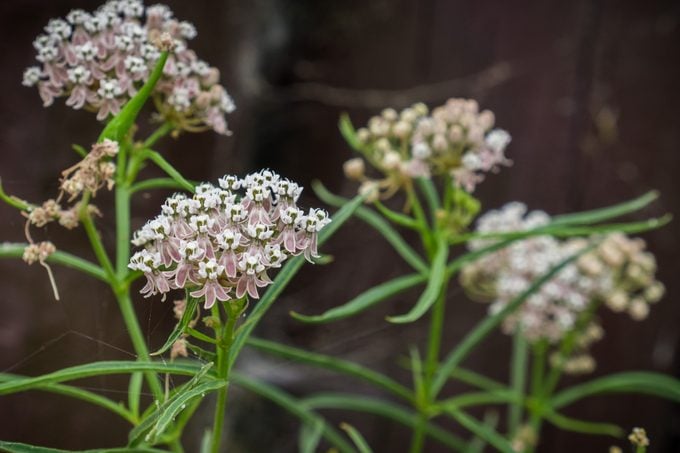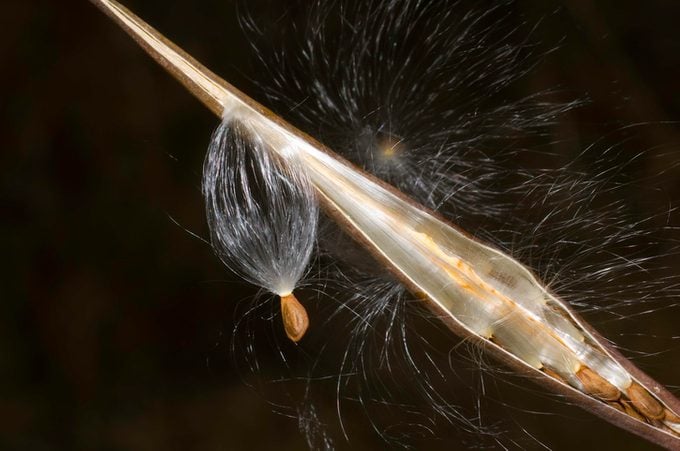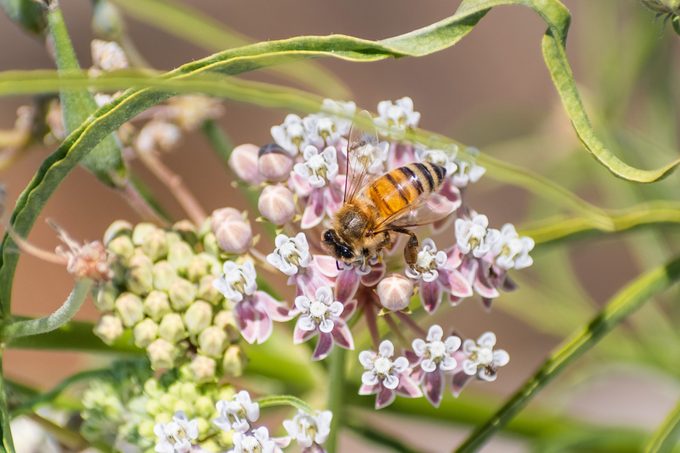Narrowleaf Milkweed Care and Growing Tips
Updated: Dec. 22, 2023
If you want to attract monarch butterflies, consider planting narrowleaf milkweed. Find out the ideal growing conditions for this host plant.

Bursting with clusters of small, star-shaped light pink or lavender and white flowers surrounded by thin pointed leaves, narrowleaf milkweed (Asclepias fascicularis) is an herbaceous perennial native to both Central America and North America. It’s found naturally in northeast Washington, California and parts of Colorado, northern Arizona and Idaho.
Also known as Mexican whorled milkweed, this summer bloomer is part of the Apocynaceae family. It grows between 2 to 4 feet tall and 1 foot wide and thrives in Zones 6 to 10.
Milkweed is a mainstay in pollinator gardens, attracting monarch butterflies, native bees, and other beneficial insects to its nectar-rich blossoms. As the primary food source for monarch caterpillars, milkweed helps preserve this endangered butterfly species.
Check out the top 10 types of milkweed to support monarch butterflies.
Growing Narrowleaf Milkweed From Seed

After the last frost, sow narrowleaf milkweed seeds in an open, sunny spot. Keep the soil surface moist until the plants are established. The plant grows quickly, germinating in about 10 days and becoming large enough for larvae to munch on 20 days later.
Narrowleaf milkweed self-seeds once it’s established in your garden. After the blooms fade, large horn-shaped seed pods develop and hang off the plant. Let pods turn brown and split open on their own to germinate elsewhere. Or collect the seeds yourself in early September. Make sure you wear gloves when handling milkweed. Store the seeds in a plastic bag in the refrigerator and plant them the following spring.
Backyard Tip: Milkweed seed pods also look lovely in dried flower arrangements.
Enjoy these pretty pictures of milkweed flowers in bloom.
Where to Plant Narrowleaf Milkweed

Narrowleaf milkweed prefers at least six hours of direct sunlight, although it can handle some shade. It grows well in most soils, from loamy to clay to sandy, that have a neutral pH level.
This plant rarely needs fertilizer and only requires about an inch of water weekly, making it a low-maintenance addition to any garden. It grows well on slopes where water can drain away from the plant. It’s also deer-resistant.
Although not considered an invasive species, milkweed can grow aggressively. Select a spot where it can spread freely or plant it in containers.
Be careful not to place milkweed where pets or small children can reach the plants because the stems, leaves, and roots contain toxic compounds.
Narrowleaf Milkweed Companion Plants
Add this type of milkweed to your gardens alongside other flowers that monarch butterflies love such as goldenrod, Indian mallow, butterfly bush, California aster, and herbs like mint, lavender, and sage. You’ll be sustaining this important species through all its life stages while creating a beautiful floral landscape to enjoy for years to come.
Discover fascinating milkweed facts you should know.
Common Milkweed Pests and Diseases
Avoid watering milkweed leaves or flowers. Overwatering can damage its root system and expose it to fungal infections and other diseases that could harm monarchs. Make sure plants aren’t too crowded; increasing airflow between them helps deter disease. Cut back any affected leaves promptly to stop the spread of fungal disease rather than using a fungal spray, which might harm butterflies.
Ophryocystis elektroscirrha (OE), a harmful microscopic parasite, forms spores on milkweed that then stick to the monarch butterfly, infecting its larvae and causing its wings to come in deformed. To prevent this, cut back milkweed to about six inches in the winter–which also helps encourage new growth in the spring–and plant only native milkweed species (avoid tropical milkweed).
Other milkweed pests to check for include oleander aphids, which can be removed by hand or blasted off with a garden hose.
We asked the experts: should gardeners remove large red milkweed bugs?




















